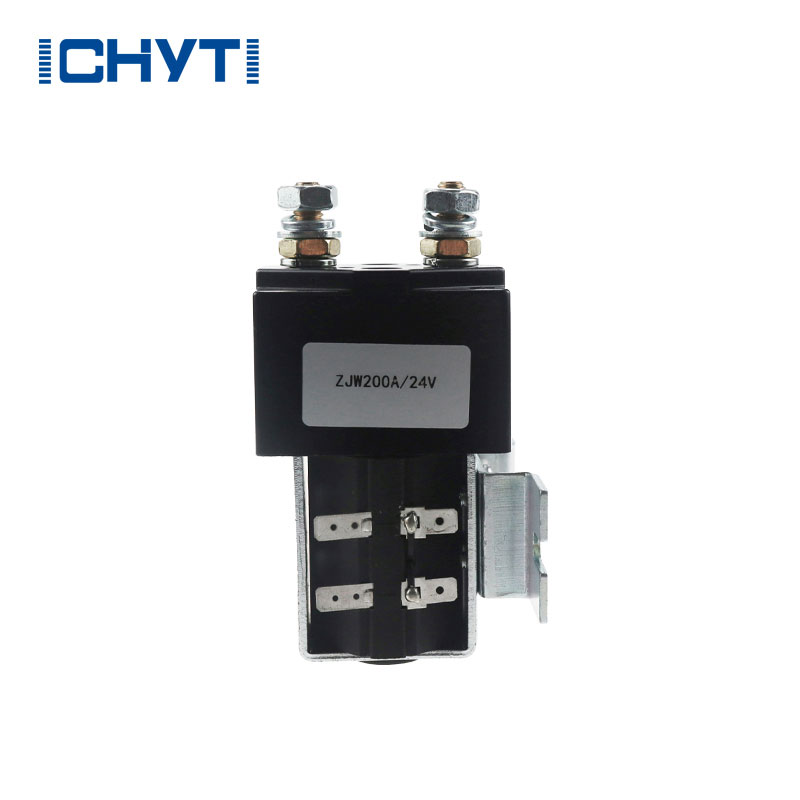
- English
- Español
- Português
- русский
- Français
- 日本語
- Deutsch
- tiếng Việt
- Italiano
- Nederlands
- ภาษาไทย
- Polski
- 한국어
- Svenska
- magyar
- Malay
- বাংলা ভাষার
- Dansk
- Suomi
- हिन्दी
- Pilipino
- Türkçe
- Gaeilge
- العربية
- Indonesia
- Norsk
- تمل
- český
- ελληνικά
- український
- Javanese
- فارسی
- தமிழ்
- తెలుగు
- नेपाली
- Burmese
- български
- ລາວ
- Latine
- Қазақша
- Euskal
- Azərbaycan
- Slovenský jazyk
- Македонски
- Lietuvos
- Eesti Keel
- Română
- Slovenski
- मराठी
- Srpski језик
DC Contactor vs AC Contactor: Core Differences.
2025-10-21
The main circuit of a DC contactor is typically two-pole, as DC only has positive and negative poles. In contrast, AC contactors have three poles because they switch three-phase power.
Regarding contactor overvoltage and arc extinguishing measures:
For AC circuits, when the contactor is open, the overvoltage generated in the circuit is relatively low. Furthermore, AC arcs have a zero-crossing rest moment, which causes the arc to extinguish and reignite after zero crossing. Therefore, extinguishing AC arcs is relatively easy.
For DC circuits, when the contactor is open, the overvoltage generated in the circuit is high, making the arc difficult to extinguish.
Thus, compared to DC contactors, AC contactors have relatively simpler arc extinguishing measures.
The arc extinguishing rate of DC contactors is high and complex, while that of AC contactors is relatively simple.
Coordination between contactors and upstream circuit protection devices:
When a short circuit occurs in a line, the protection of upstream circuit protection devices (fuses, circuit breakers) takes time to activate. During this time, the contactor must withstand the thermal shock of the short-circuit current. This phenomenon is called the contactor's protective coordination relationship, expressed as SCPD.
National standards categorize SCPD into two types: Type 1 damages the contactor's main circuit after the circuit breaker is disconnected, while Type 2 does not.
Clearly, the protective coordination relationship SCPD for DC and AC circuits differs, so please carefully consult the data sheet before use.
Regarding contactor coil voltage:
The coil voltage of an AC contactor can be either AC or DC, but the coil voltage of a DC contactor is always DC.

DC contactor parameters
| Parameter Category | Specification and Description |
|---|---|
| Product Model | ZJW200A |
| Rated Voltage | 24V DC / 48V DC |
| Contact Rated Load Current | 200A |
| Operating System | Continuous or Intermittent |
| Termination Type | M8 External Thread |
| Dimensions | 86mm × 46mm × 122mm |
| Weight | <700g |
| Protection Rating | IP50 |
| Operating Temperature | -25℃ to +55℃ |
| Operating Humidity | 5% to 95% RH (non-condensing) |
| Insulation Resistance | >50 MΩ |
| Coil Power Consumption | <12W |
| Coil Type | Single Coil |
| Electric Strength | 50Hz/60Hz, 1500V AC, 1 minute |



